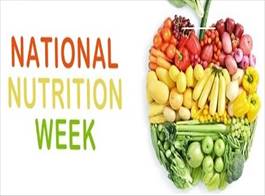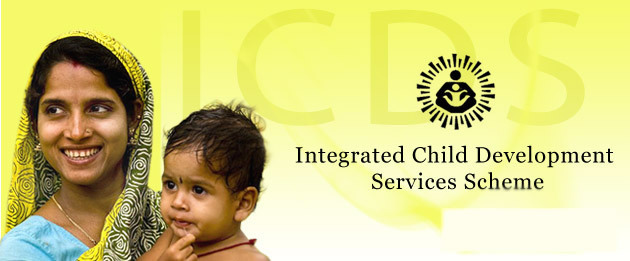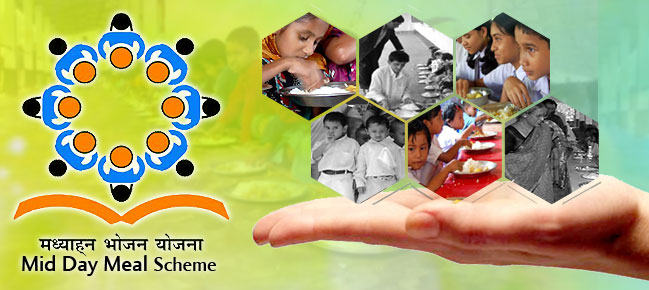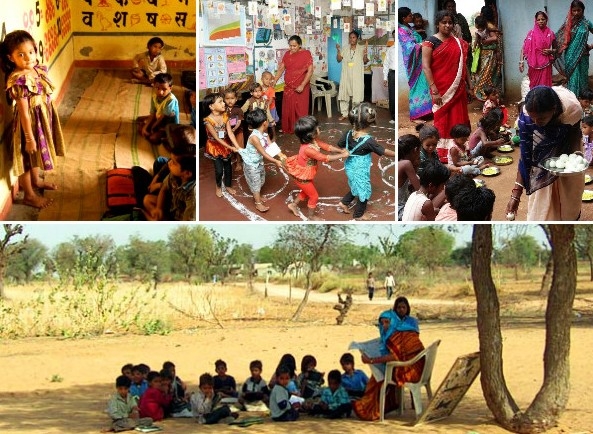Governmental Initiatives for Meeting Nutritional Needs of the Indians
Article 47 of the Constitution documents that it is “duty of the state to raise the level of nutrition and the standard of living and to improve public health”.
 |
National Nutrition week (1-7 September), initiated by the Food and Nutrition Board in 1982, is an annual event of immense significance.
It aims at intensifying nutrition/health
related awareness among the masses which can profoundly impact
productivity, economic growth and ultimately development of the nation.
During this week, major emphasis is laid on nutrition education and
training programmes carried out by the governmental/non-governmental
organizations.
|
|
“The theme for 2016 is “Life Cycle Approach for Better Nutrition”
|
|
Nutrition constitutes the very foundation
of human development by imparting immunity and, thus, reducing
morbidity, mortality and disability. In addition, it promotes lifelong
learning capacities and enhanced productivity. Malnutrition, on the
other hand, tends to lower IQ and impairs cognitive ability of the
children, thus, affecting their school performance and productivity in
later life. Low-birth weight babies not only have impaired immune
function but are at a greater risk of non-communicable diseases during
their adulthood.
Global Nutrition Report-2016 clearly
indicates how India still lags behind in tackling malnutrition
effectively. Malnutrition manifests in the form of stunting, wasting,
micronutrient deficiencies and overweight/obesity. In terms of
stunting, India ranks 114th out of 132 nations (incidence: 38.7%) while for wasting, it is 120th among 130 countries (incidence: 15.1%). Regarding anaemia prevalence among women of reproductive ages, India ranks 170th out of 185 countries (incidence: 48.1%) – and this is a matter of grave concern.
Over the years, the Government has accorded the highest priority to combat malnutrition among its people. The Integrated Child Development Services (ICDS) scheme was launched in 1975.

ICDS is one of the world’s largest and
most unique outreach programme for early childhood care and development
and covers all the districts and blocks in the country.

Similarly, the Mid- Day Meal Scheme
was universalized in 1995. However, there is a lack of multisectoral
coordination which is most essential to address the intergenerational
and multifaceted nature of malnutrition.
Similarly, although, globally it is well
acknowledged that focusing on the first 1000 days (conception to 2 years
post-partum) is a critical window of opportunity to address
child malnutrition; in India, focus of the nutrition programmes has
chiefly been postbirth. Researches indicate that 50% of the growth
failure accrued by the age of 2 years occurs in the womb itself, mainly
owing to poor maternal nutrition –during and prior to pregnancy.
Therefore, maintaining an adequate nutritional status (pre-conception and first trimester when majority of the women may not even be aware of their pregnancy) is rather crucial for appropriate foetal development.
Undernourished girls have greater chances
of becoming undernourished mothers as they inevitably bear low
birth weight babies, and thus, perpetuate an intergenerational cycle of
malnutrition. This gets further compounded in adolescent mothers, who
simultaneously carry the burden of two physiological stages (adolescence
and pregnancy). This also holds true for closely spaced high parity
pregnancies – often exacerbating nutrition deficits, which are passed on
to their offspring/s.
For inclusive growth, under the eleventh 5year plan, universalization of ICDS coupled with setting up of mini Anganwadi centers in deprived areas was
undertaken; yet, there is a need to further strengthen ICDS in poor
performing states based on the lessons learnt from various
successful models. Overhauling of ICDS by the Ministry of WCD (May 2016) is expected to improve nutrition scenario of the country.
The Government is now working on close Monitoring of the Nutrition programmes by digitisation of the Anganwadis.

This is expected to turnaround the entire
system since it will help in real time monitoring of nutrition status
of each child and take up immediate interventions wherever required.
Similarly, diarrhoea has a direct impact on nutrition status of a child.
Constructing toilets and providing clean drinking water are being taken
up by the Government on a war footing to provide clean living
conditions and good health to one and all.
In 2013, government passed the food
security bill entitling 5 kg food grain/person/month at
highly subsidised rates. It is commendable that food and nutrition
security is being promoted through several national level programmes
like TPDS, MGNREGA, ICDS and MDMS. Further, programmes like Swachh Bharat, ‘Beti Bachao, Beti Padao’ address
critical nutrition sensitive issues. Fortification of food items
especially those being distributed through the PDS is also being taken
up to address the issue of malnutrition in the country.
A high level responsiveness is mandated
to effectively manage the emergency situations like droughts, floods,
and infection. It is important that nutrition related data are collected
more frequently (currently gathered once in 5-7 years) to reflect the
changing nutritional needs as well as impact of the nutrition
interventions. It is important that a national nutrition strategy is
designed to ensure that under-nutrition gets utmost priority. India’s
nutrition challenges call for urgent action for ensuring faster,
gender-sensitive, inclusive and sustainable growth.
Nutrition is a double edged sword – both under and over nutrition being harmful….
…. Optimum nutrition combined with regular physical activity is the cornerstone of good health!!


No comments:
Post a Comment